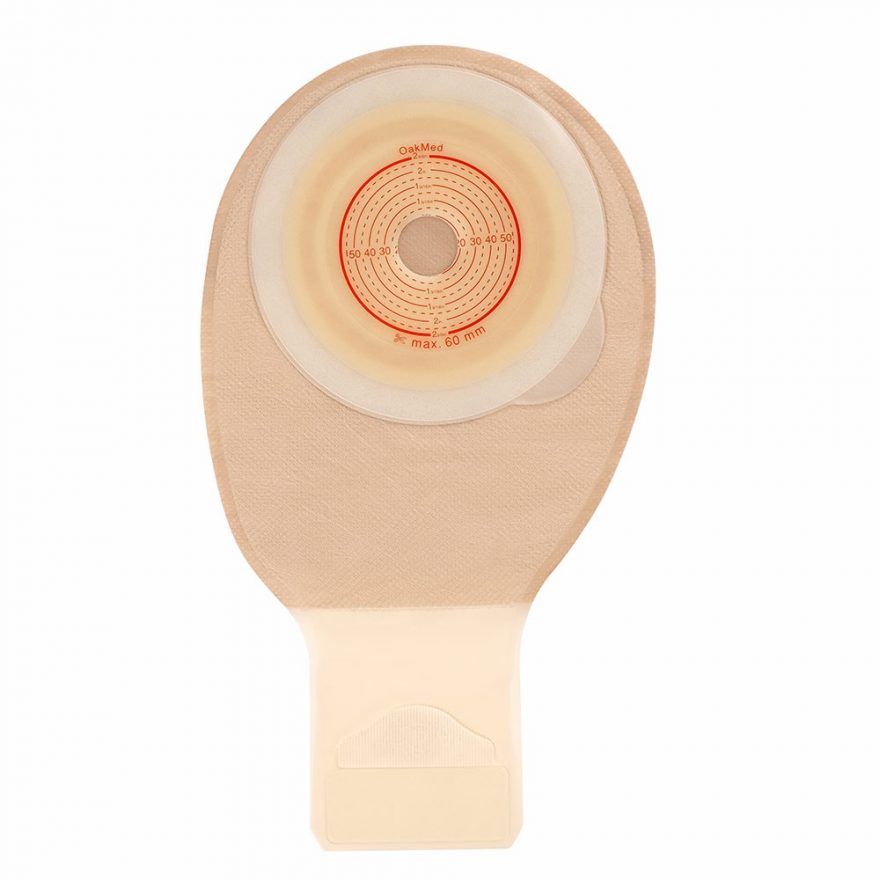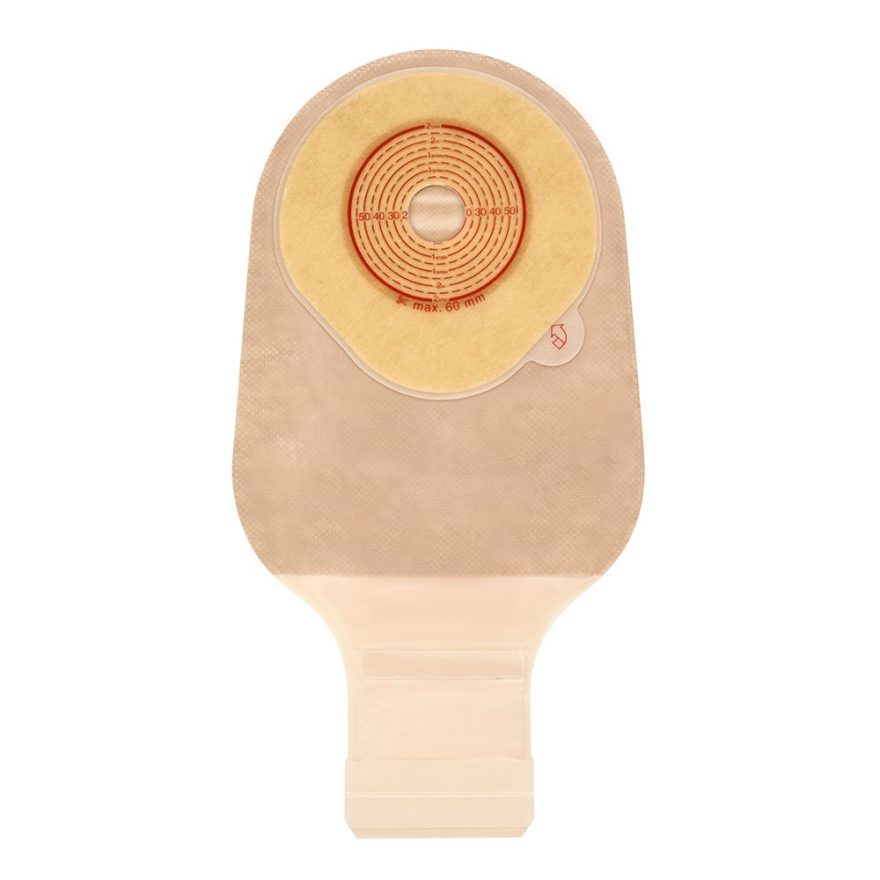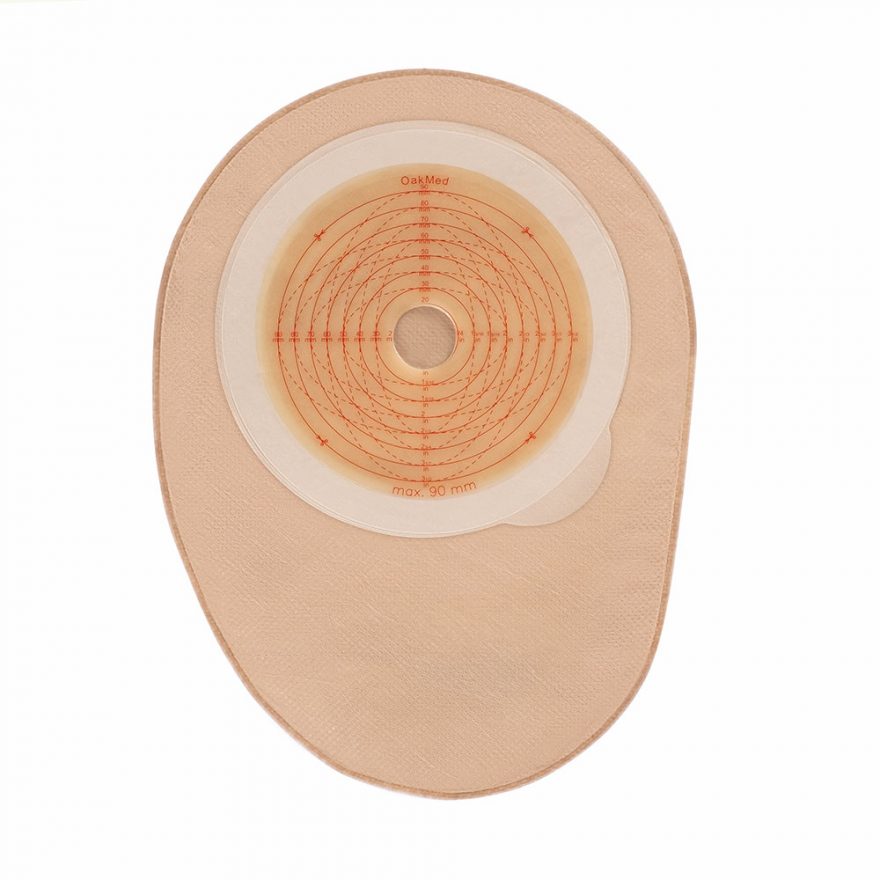There are many different types of ostomy surgeries performed for a variety of issues and diseases within the bowel. The type of stoma that the surgeon creates is dependent on the reason for the surgery (for example, diverting the flow of stools/poo away from an area of diseased bowel) and/or which section of bowel (if any) needs to be removed. Any section of the bowel (large or small) can be used to create a stoma. The type of stoma created can be referred to as:
- End: the end of the bowel is brought up onto the surface of the abdomen and the remaining bowel is closed and left inside the abdomen
- Loop: a loop of bowel is brought up onto the surface of the abdomen, this is usually used to divert stools away from a healing join in the bowel (anastomosis) or a portion of diseased bowel (such as in Crohn’s disease) to allow it to heal
- Double Barrelled: the bowel is resected/separated in two and both ends are brought up onto the surface of the abdomen, side by side. This can be either: two ends of large bowel (‘double barrelled colostomy’), the end of small bowel and an end of large bowel (‘double barrelled ileostomy/colostomy’) or two ends of small bowel (‘double barrelled ileostomy’).
Your stoma care nurse can explain what type of stoma you have and what function you can expect from it.
Knowing the different types of Colostomies:
- Ascending Colostomy: The ascending colostomy is located on the right side of the abdomen. The output is very liquid and therefore this type of stoma is rarely used, as an ileostomy would be preferable.
- Transverse Colostomy: The transverse colostomy is formed in the upper part of the abdomen, either in the centre or towards the right side of the body. It is usually created for inflammatory bowel disease, diverticulitis, cancer, obstruction, injury or birth defects. When conditions such as these are present in the lower colon, it may be necessary to give this affected part of the colon a rest. A transverse colostomy may be created for a period of time which prevents stool from passing through the area of the colon that is inflamed, infected, diseased or newly operated on, therefore allowing healing to occur. This type of colostomy is usually a temporary measure. Depending on the healing process, the colostomy may be required for a few weeks, months, or even years. Eventually the colostomy is likely to be closed and the normal bowel continuity may be restored. The output from this type of colostomy can be either porridge like in consistency or firmer.
- A permanent transverse colostomy is made when the lower section of the colon must be removed or permanently rested. This may also be the case if other health problems make it unwise for the patient to have further surgery. This type of colostomy provides a permanent exit for stool and is not reversed or closed.
There are two types of transverse colostomies:
- Loop Transverse Colostomy: This colostomy is created by bringing a loop of bowel through an incision in the abdominal wall. The loop may be held in place outside the abdomen by a plastic rod slipped beneath it. An incision is made in the bowel to allow the passage of stool through the loop colostomy. The supporting rod is removed by the stoma care nurse a few days after surgery, when healing has occurred that will prevent the loop of bowel from retracting into the abdomen. This is a quick and painless procedure. A loop colostomy is most often performed for creation of a temporary stoma to divert stool away from an area of intestine that has been blocked or ruptured.
- Double-Barrel Transverse Colostomy: The double-barrelled l transverse colostomy involves the creation of two separate stomas on the abdominal wall, by dividing the bowel completely. The proximal (nearest) stoma is the functional end which is still connected to the gastrointestinal tract and will therefore drain stool. The distal stoma is connected to the rectum and is called a mucus fistula as it drains small amounts of mucus material. This type of surgery is often performed to rest an area of the bowel and may later be closed via further surgery.
On occasions the end of the inactive part of the bowel is sewn and closed inside the abdomen, this would then mean there is only the one stoma rather than double barrelled. The mucus from the resting portion would come out through the anus. This can be referred to as a single-barrelled stoma.
When would a double barrelled surgery be required?
The double-barrelled stoma is often a temporary colostomy, performed to rest an area of the bowel and later be closed. It is often used in temporary diversion, in cases where resection of the large bowel is required, due to perforation or necrosis. For those who need a cancer related colostomy, they may only need a stoma for a few months while the colon and rectum heals. There may be the option of having this reversed when all treatment is completed.
What does it look like?
The stoma itself will appear very similar to other colostomies, but will often be slightly larger due to the section of large bowel being used and also due to the two ends being visible on the surface of the abdomen. It is also often located slightly higher on the abdomen than most other colostomies.
What type of appliance would be needed?
Due to the location of the stoma, the output would be semi solid and therefore you would find that using a drainable appliance might be easier for emptying purposes, so that the skin around the stoma is not being disturbed by the constant removal of a closed pouch. Observe for any soreness from the effluent sitting on the skin and make sure the template is fitting well for good stoma health.


Drainable Standard Hydrocolloid
View the product

